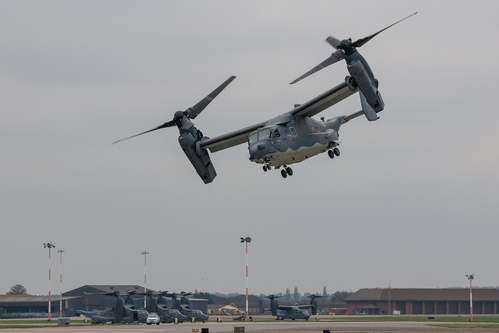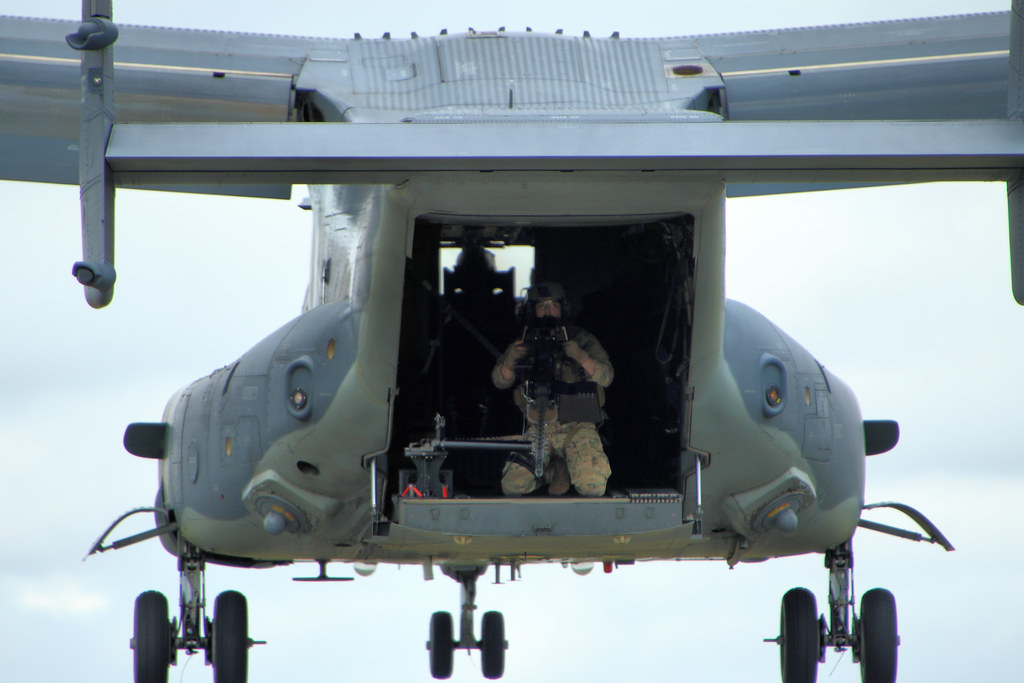
Six months after a harrowing crash that claimed the lives of eight United States Air Force special operators, the resilient members of the 21st Special Operations Squadron (SOS) at Yokota Air Base, Japan, are preparing for a return to the skies.

The Pentagon approved a gradual resumption of V-22 Osprey flight operations, which were previously halted due to the tragic November 29 incident.

This cautious approach includes phases starting with ground simulation training and reviewing maintenance records, before moving on to actual flight operations.

The 21st SOS, along with the 753rd Special Operations Aircraft Maintenance Squadron (SOAMXS), has expressed readiness to see the CV-22 back in action, showcasing confidence in the technical order changes and data-driven decisions from the leadership.

The squadrons emphasized their enthusiasm and preparation for the return, with both maintenance and aircrew personnel eagerly participating in simulator sessions and ground runs, signaling a strong desire to resume their critical missions.

Lt. Col. Matt Davis, 21st SOS Commander, and Lt. Col. Eric Cranford, commander of the 753rd SOAMXS, have shown particular concern for the mental resilience and confidence of their personnel.

They noted that the path to restarting flight operations is marked by careful consideration of the emotional well-being of the squadrons’ members.

ATLANTIC OCEAN (Feb. 20, 2008) A Marine Corps MV-22 Osprey prepares to land aboard the amphibious assault ship USS Nassau (LHA 4). The Nassau Strike Group is en route to the NavyÕs 5th and 6th Fleet areas of responsibility in support of maritime security operations. U.S. Navy photo by Lt. j.g. Anthony Falvo (Released)
This consideration is particularly poignant given the close-knit nature of the special operations community at Yokota and the profound loss it experienced.

As the investigations into the November crash draw to a close, with the V-22’s component failure still under scrutiny, Air Force Special Operations Command (AFSOC) spokesperson Lt. Col. Rebecca Heyse anticipates the release of the public report once the aircrew’s families have been briefed.

The loss remains a heavy burden, but it also underlines the unwavering spirit of those at the 21st SOS and 753rd SOAMXS.

Beyond the immediate focus on resuming flight operations, the V-22 program is looking ahead with long-term modernization plans.

Marine Col. Brian Taylor, V-22 program manager, discussed how ReVAMP, the Renewed V-22 Aircraft Modernization Program, aims to extend the operational life of the Osprey into the 2060s and potentially beyond.

Plans include cockpit and software upgrades, and possibly “pilot optional” features to keep the Osprey viable well into the future.

Notably, Taylor mentioned that if the fuselage is fitted with new wings and nacelles, the V-22 could see another 40 years of service.

The Osprey’s unique capabilities, such as its vertical takeoff and landing paired with the high-speed performance of a fixed-wing aircraft, have made it an invaluable asset for U.S. military operations.
Relevant articles:
– 22 crash, an Air Force Osprey squadron in Japan prepares to fly again, Breaking Defense
– Everyone’s V-22s are flying again—and may do so past 2060, defenseone.com
– Air Force Starts to Fly Some Ospreys Again Following Crash that Killed 8 Airmen in Japan, Military.com
– V-22 Osprey fleet will fly again, with no fixes but renewed training, Defense News

